Polarisation Of Light from A2Z PHYSICS (HINGLISH) WAVE OPTICS for Class 12
| Class 12 | PHYSICS |
| Chapter | WAVE OPTICS |
| A2Z PHYSICS (HINGLISH) | Polarisation Of Light |
| Medium | English |
| Academic Year | 2023-2024 |
Question 48
Fig, here shows P and Q as two equally intense coherent sources emitting radiations of wavelength 20m. The separation PQ si 5m, and phase of P is ahead of the phase Q by 90∘. A, B and C are three distant points of observation equidistant from the mid - point of PQ. The intensity of radiations of A, B, C will be in the ratio
 View Solution
View SolutionQuestion 73
In Young's double slit experiment, the two slits acts as coherent sources of equal amplitude A and wavelength λ. In another experiment with the same set up the two slits are of equal amplitude A and wavelength λ but are incoherent. The ratio of the intensity of light at the mid-point of the screen in the first case to that in the second case is View SolutionQuestion 81
A beam of light consisting of two wavelength 650nm and 520nm is used to illuminate the slit of a Young's double slit experiment. Then the order of the bright firnge of the longer wavelength that coincide with a bright fringe of the shorter wavelength at the least distance from the central maximum is View SolutionQuestion 82
Two identical radiators have a separation of d=λ/4 where λ is the wavelength of the waves emitted by either source. The initial phase difference between the sources is λ/4. Then the intensity on the screen at a distant point situated at an angle θ=30∘ from the radiators is (here I0 is intensity at that point due to one radiator alone)View SolutionQuestion 84
Light of wavelength 500nm is used to form interference pattern in Young's double slit experiment. A uniform glass plate of refractive index 1.5 and thickness 0.1mm is introduced in the path of one of the interfering beams. The number of fringes which will shift the cross wire due to this is View SolutionQuestion 93
In two separate set-ups of the Young's double slit experiment, fringes of equal width are observed when lights of wavelength in the ratio of 1:2 are used. If the ratio of the slit separation in the two cases is 2:1, the ratio of the distance between the plane of the slits and the screen in the two set-ups areView SolutionQuestion 95
In Young's double slit experiment, the slits are 0.5mm apart and interference pattern is observed on a screen placed at a distance of 1.0m from the plane containg the slits. If wavelength of the incident light is 6000Å, then the separation between the third bright fringe and the central maxima is View SolutionQuestion 101
If a transparent medium of refractive index μ=1.5 and thickness t=2.5×10−5m is inserted in front of one of the slits of Young's Double Slit experiment, how much will be the shift in the interference patten? The distance between the slits is 0.5mm and that between slits and screen is 100cmView SolutionQuestion 107
In a two slit experiment with monochromatic light fringes are obtained on a screen placed at some distance from the sits. If the screen is moved by 5×10−2m towards the slits the change in fringe width is 3×10−5m. If separation between the slits is 10−3m, the wavelength of light usedView SolutionQuestion 110
In a Young's double slit experiment, the slits are 2mm apart and are illuminated with a mixture of two wavelength λ0=750nm and λ=900nm. The minimum distance from the common central bright fringe on a screen 2m from the slits where a bright fringe from one interference pattern coincides with a bright fringe from the other is View SolutionQuestion 115
When one of the slits of Young's experiment is covered with a transparent sheet of thickness 4.8mm, the central fringe shifts to a position originally occupied by the 30th bright fringe. What should be the thickness of the sheet if the central fringe has to shift to the position occupied by 20th bright fringe?View SolutionQuestion 116
A flake of glass (refractive index 1.5) is placed over one of the openings of a double slit apparatus. The interference pattern displaces itself through seven succesive maxima towards the side where the flake is placed. If wavelength of the diffracted light is λ=600nm, then the thickness of View SolutionQuestion 117
In the ideal double-slit experiment, when a glass-plate (refractive index 1.5) of thickness t is introduced in the path of one of the interfering beams (wavelength λ), the intensity at the position where the central maximum occurred previously remains unchanged. The minimum thickness of the glass-plate isView SolutionQuestion 148
A parallel monochromatic beam of light is incident normally on a narrow slit. A diffraction patten is formed on a screen placed perpendicular to the direction of incident beam. At the first maximum of the diffraction pattern the phase difference between the rays coming from the edges of the slit isView SolutionQuestion 152
Light of wavelength λ=5000Å falls normally on a narrow slit. A screen is placed at a distance of 1m from the slit and perpendicular to the direction of light. The first minima of the diffraction pattern is situated at 5mm from the centre of central maximum. The width of the slit is View SolutionQuestion 155
Angular width of central maxima in the Fraunhofer diffraction pattern of a slit is measured. The slit is illuminated by light of wavelength 6000Å. When the slit is illuminated by light of another wavelength, the angular width decreases by 30%. The wavelength of this light will beView SolutionQuestion 186
Light passes successively through two polarimeters tubes each of length 0.29m. The first tube contains dextro rotatory solution of concentration 60kgm−3 and specific rotation 0.01radm2kg−1. The second tube contains laevo rotatory solution of concentration 30kg/m3 and specific rotation 0.02radm2kg−1. The net rotation produced is View SolutionQuestion 190
Figure represents a glass plate placed vertically on a horizontal table with a beam of unpolarised light falling on its surface at the polarising angle of 57∘ with the normal. The electric vector in the reflected light on screen S will vibrate with respect to the plane of incidence in a
 View Solution
View SolutionQuestion 192
Unpolarised light of intensity 32Wm−2 passes through three polarizers such that transmission axes of the first and second polarizer makes and angle 30∘ with each other and the transmission axis of the last polarizer is crossed with that of the first. The intensity of final emerging light will be View SolutionQuestion 193
The figure shows four pairs of polarizing sheets, seen face-on. Each pair is mounted in the path of initially unpolarised light. The polarizing direction of each sheet (indicated by the dashed line) is referenced to either a horizontal x-axis or a vertical y axis. Rank the pair according to the fraction of the initial intensity that they pass, greatest first
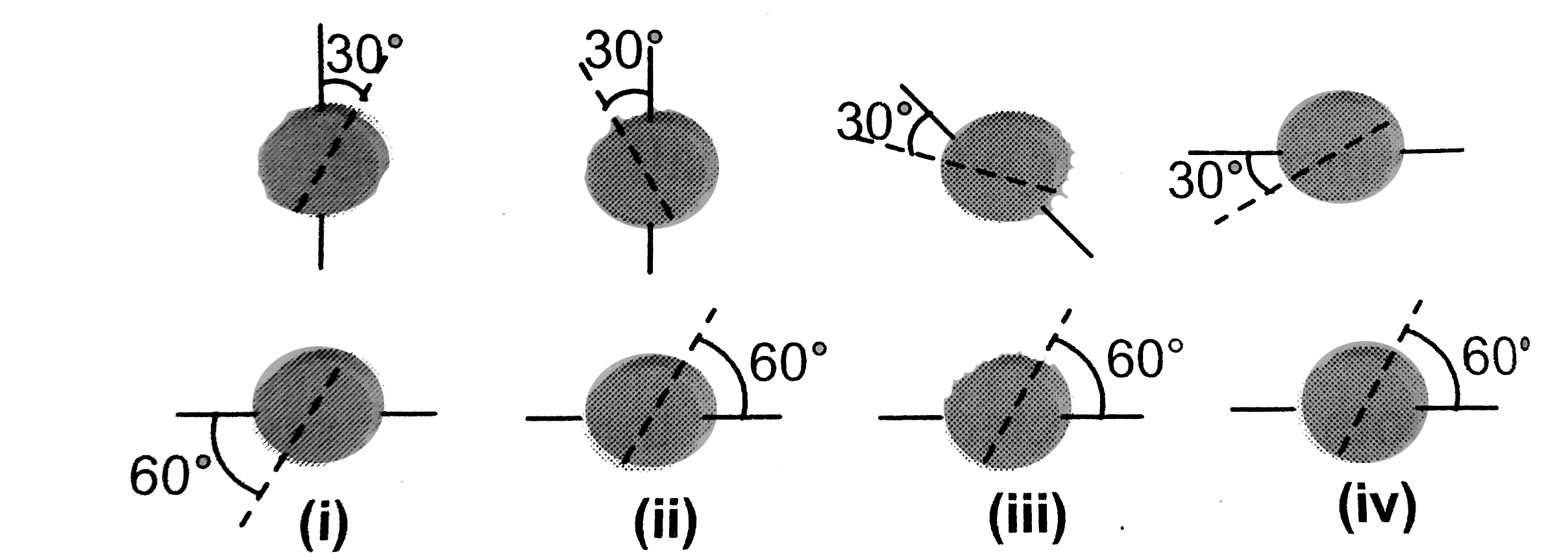 View Solution
View SolutionQuestion 196
Two polaroids are placed in the path of unpolarized beam of intensity I0 such that no light is emitted from the second polarid. If a third polaroid whose polarization axis makes an angle θ with the polarization axis of first polaroid, is placed between these two polariods then the intensity of light emerging from the last polaroid will beView SolutionQuestion 199
A diffraction grating is ruled with 600 lines per millimetre. When monochromatic light falls normally on the grating, the first order diffracted beams are observed on the far side of the grating each making an angle of 15∘ with the normal to the grating.
What is the frequency of the light?View SolutionQuestion 201
In YDSE, light of wavelength λ=5000Å is used, which emerges in phase from two slits distance d=3×10−7m apart. A transparent sheet of thickness t=1.5×10−7m, refractive index n=1.17, is placed over one of the slits. Where does the central maxima of the interference now appear from the center of the screen? (Find the value of y?)
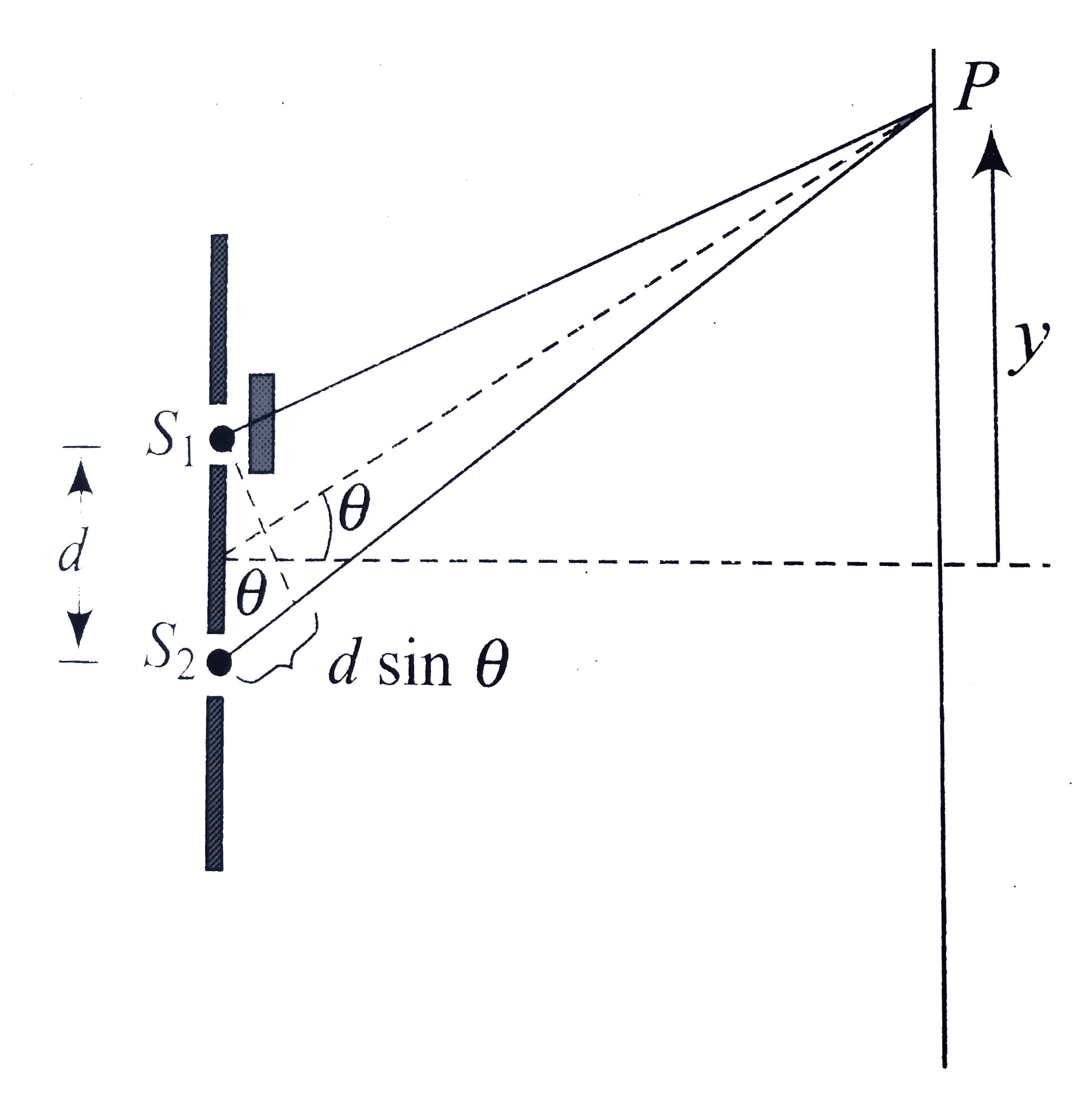 View Solution
View SolutionQuestion 202
A double-slit experiment is immersed in a liquid of refractive index 1.33. It has slit separation of 1mm and distance between the plane of slits and screen is 1.33m. The slits are illuminated by a parallel beam of light whose wavelength in air is 6830Å. Then the fringe width isView SolutionQuestion 203
In a modified Young's double-slit experiment, a monochromatic uniform and parallel beam of light of wavelength 6000Å and intensity (10/π) W m−2 is incident normally on two circular apertures A and B of radii 0.001 m and 0.002 m, respectively. A perfectly transparent film of thickness 2000Å and refractive index 1.5 for the wavelength of 6000Å is placed in front of aperture A (see the figure). Calculate the power (in mW) received at the focal spot F of the lens. Then lens is symmetrically placed with respect to the aperture. Assume that 10% of the power received by each aperture goes in the original direction and is brought to the focal spot.
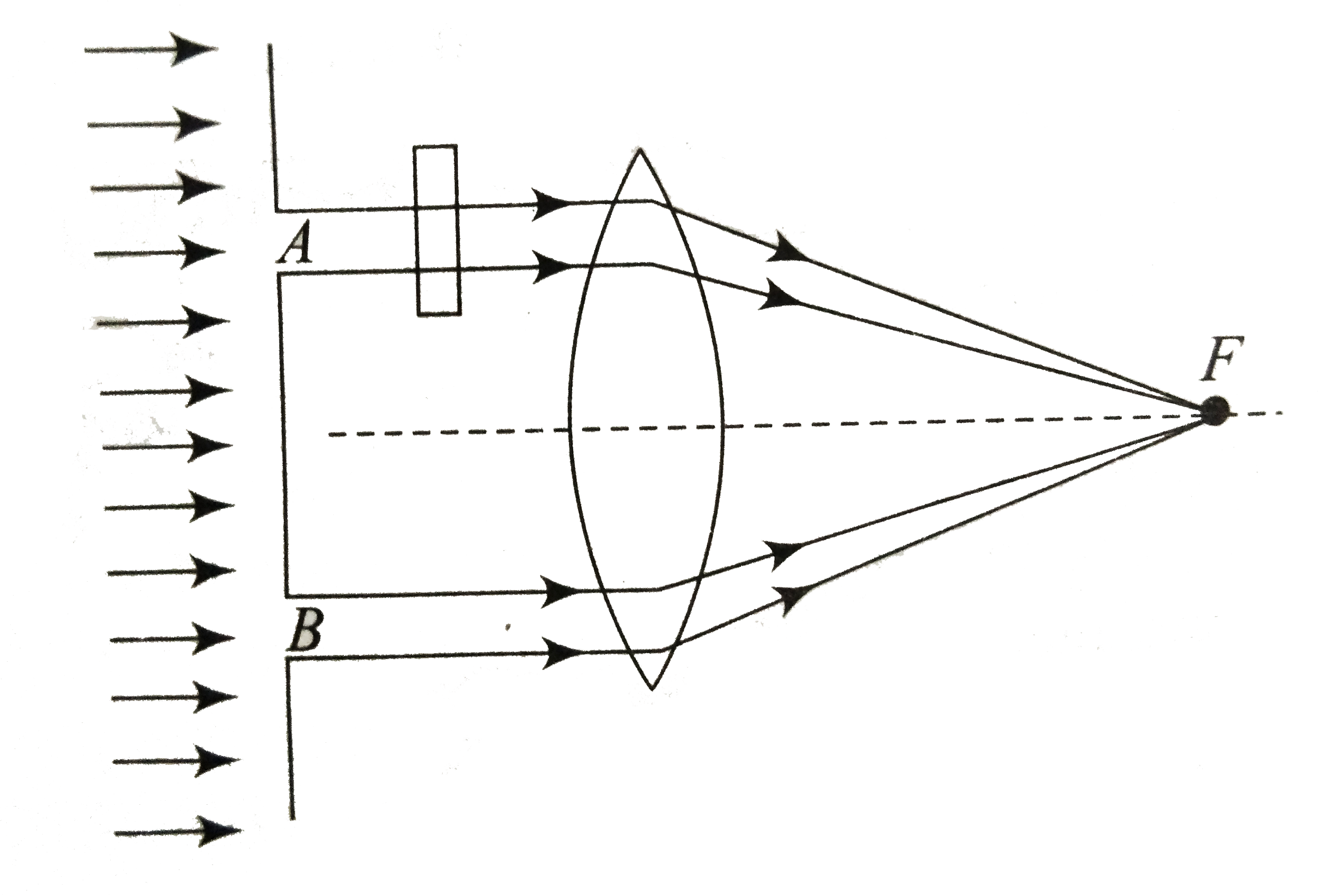 View Solution
View SolutionQuestion 210
Following figures shows sources S1 and S2 that emits light of wavelength λ in all directions. The sources are exactly in phase and are separated by a distance equal to 1.5λ. If we start at the indicated start point and travel along path 1 and 2, the interference produce a maxima all along
 View Solution
View SolutionQuestion 211
White light is used to illuminate the two slits in a Young's
double slit experiment. The separation between the slits is b and the screen is at
a distance d(>>b) from the slits. At a point on the screen directly in front of
one of the slits, certain wavelengths are missing. Some of these missing wavelength are View SolutionQuestion 214
In an interference arrangement similar to Young's double-slit experiment, the slits S_1 and S_2 are illuminated with coherent microwave sources, each of frequency 10^6 Hz. The sources are synchronized to have zero phase difference. The slits are separated by a distance d=150.0 m. The intensity I (theta) is measured as a function of theta, where theta is defined as shown. If I_0 is the maximum intensity, then I (theta) for 0lethetale90degree is given by
 View Solution
View SolutionQuestion 216
In a standard Young's double-slit experiment with coherent light of wavelength 600 nm, the fringe width of the fringes in the central region (near the central fringe, P0) is observed it to be 3 mm. An extremely thin glass plate is introduced to be displaced by 11 mm. Another thin plate is placed before the second slit and it is observed that the fringe are now displaced by an additional 12 mm. If the additional optical path lengths introduced are Δ1 and Δ2 then
 View Solution
View SolutionQuestion 219
In Young's doulbe-slit experiment the separation between two coherent sources S1 and S2 is d and the distance between the source and screen is D. In the interference pattern, it is found that exactly in front of one slit, there occurs a minimum. Then the possible wavelengths used in the experiment areView SolutionQuestion 223
Two ideal slits S1 and S2 are at a distance d apart, and illuninated by light of wavelength λ passing through an ideal source slit S placed on the line through S2 as shown. The distance between the planes of slits and the source slit is D.A screen is held at a distance D from the plane of the slits. The minimum value of d for which there is darkness at O is (d<<D)
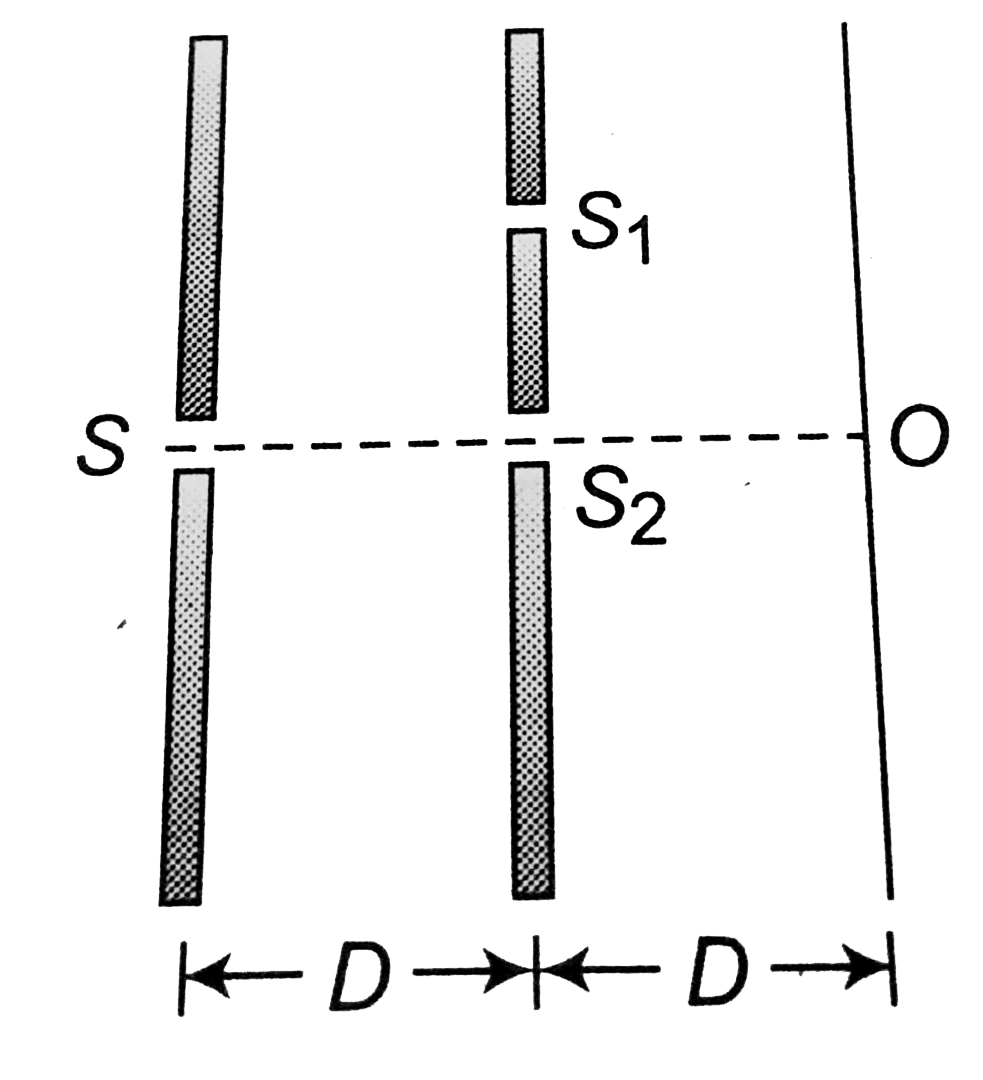 View Solution
View SolutionQuestion 224
In double slit experiment fringes are obtained using light of wavelength 4800Å One slit is covered with a thin glass film of refractive index. 1.4 and another slit is covered by a film of same thickness but refractive index 1.7. By doing so, the central fringe is shifted to fifth bright fringe in the original pattern. The thickness of glass film is View SolutionQuestion 232
In Young's double-slit experiment d/D=10−4 (d = distance between slits, D = distance of screen from the slits) At point P on the screen, resulting intensity is equal to the intensity due to the individual slit I0. Then, the distance of point P from the central maximum is (λ=6000Å)View SolutionQuestion 235
A plane wave of monochromatic light falls normally on a uniform thin film of oil which covers a glass plate. The wavelength of source can be varied continuously. The destructive interference is observed for λ=5000Å and λ=1000Å and for no other wavelength in between. If μ of oil is 1.3 and that of glass is 1.5, the thickness of the film will be View SolutionQuestion 236
A parallel monochromatic beam of light is incident normally on a narrow slit. A diffraction pattern is formed on a screen placed perpendicular to the direction of the incident beam. At the first minimum of the diffraction pattern, the phase difference between the rays coming from the two edges of the slit isView SolutionQuestion 237
In a double slit experiment, interference is obtained from electron waves produced in an electron gun supplied with voltage V. If λ is wavelength of the beam, D is the distance of screen, d is the spacing between coherent source, h is Planck's constant, e is charge on electron and m is mass of electron, then fringe width is given as View SolutionQuestion 245
Statement I: In Young's double-slit experiment, the two slits are at distance d apart. Interference pattern is observed on a screen at distance D from the slits. At a point on the screen which is directly opposite to one of the slits, a dark fringe is observed. Then, the wavelength of wave is proportional to the squar of distance between two slits.
Statement II: For a dark fringe, intensity is zeroView SolutionQuestion 255
Assertion (A) : For best contrast between maxima and minima in the interference pattern of Young's double slit experiment the intensity of light emerging out of the two slits should be equal.
Reasson (R ) : The intensity of interference pattern is proportional to the square of the amplitude. View SolutionQuestion 267
In Young's double-slit experiment, the slits are 2mm apart and are illuminated by photons of two wavelengths λ1=12000Å and λ2=10000Å. At what minimum distance from the common central bright fringe on the screen 2m from the slit will a bright fringe from one interference pattern coincide with a bright fringe from the other?View SolutionQuestion 275
The intensity at the maximum in a Young's double slit experiment is I0. Distance between two slits is d=5λ, where λ is the wavelength of light used in the experment. What will be that intensity in front of one of the slit on the screen placed at a distance at a distance D=10 d ? View SolutionQuestion 277
A linear aperture whose width is 0.02cm is placed immediately in front of a lens of focal length 60cm. The aperture is illuminated normally by a parallel beam of wavelength 5×10−5cm. The distance of the first dark band of the diffraction pattern from the centre of the screen is View SolutionQuestion 281
Unpolarised light is incident from air on a plane surface of a meterial of refractive index 'μ'. At a particular angle of incidence 'I', it is found that the reflected and refracted rays are perpendicular to each other.
Which of the following options is correct for this situation?View SolutionQuestion 282
In Young's double slit experiment the separation of between the slits is 2mm, the wavelength λ of the ligth used is 5896Å and distance D between the screen and slits is 100cm.
It is found that the angular width of the fringes is 0.20∘. To increase the fringe angular width to 0.216 (with same λ and D) the separation between the slits needs to be changed toView SolutionQuestion 298
White light is used to illuminate the two slits in a Young's
double slit experiment. The separation between the slits is b and the screen is at
a distance d(>>b) from the slits. At a point on the screen directly in front of
one of the slits, certain wavelengths are missing. Some of these missing wavelength are View SolutionQuestion 299
In the ideal double-slit experiment, when a glass-plate (refractive index 1.5) of thickness t is introduced in the path of one of the interfering beams (wavelength λ), the intensity at the position where the central maximum occurred previously remains unchanged. The minimum thickness of the glass-plate isView SolutionQuestion 304
In Young's double slit experiment, the slits are 0.5mm apart and interference pattern is observed on a screen placed at a distance of 1.0m from the plane containg the slits. If wavelength of the incident light is 6000Å, then the separation between the third bright fringe and the central maxima is View SolutionQuestion 314
Assertion: A famous painting was painted by not using brush strokes in the usual manner, but rather a myriad of small colour dots. In this painting the colour you see at any given place on the painting changes as you move away.
Reason: The angular separation of adjacent dots changes with the distance from the painting. View SolutionQuestion 320
Statement I: In Young's double-slit experiment, the two slits are at distance d apart. Interference pattern is observed on a screen at distance D from the slits. At a point on the screen which is directly opposite to one of the slits, a dark fringe is observed. Then, the wavelength of wave is proportional to the squar of distance between two slits.
Statement II: For a dark fringe, intensity is zeroView SolutionQuestion 322
Assertion (A) : For best contrast between maxima and minima in the interference pattern of Young's double slit experiment the intensity of light emerging out of the two slits should be equal.
Reasson (R ) : The intensity of interference pattern is proportional to the square of the amplitude. View SolutionQuestion 337
A parallel monochromatic beam of light is incident normally on a narrow slit. A diffraction pattern is formed on a screen placed perpendicular to the direction of the incident beam. At the first minimum of the diffraction pattern, the phase difference between the rays coming from the two edges of the slit isView Solution







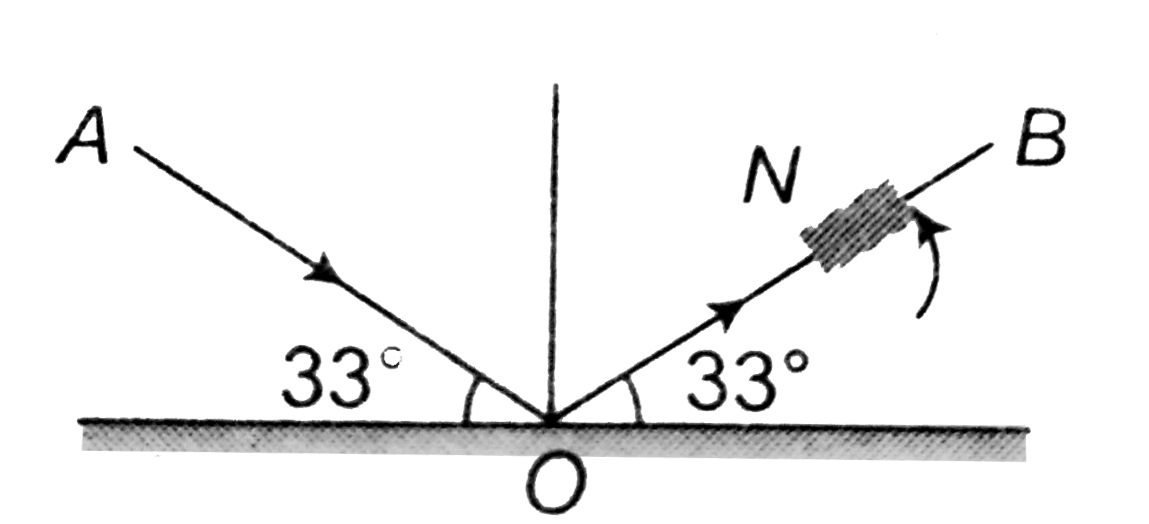









_S01_022_Q01.png)
